1. Murray CJ, Lopez AD. Global mortality, disability, and the contribution of risk factors: Global Burden of Disease Study. Lancet. 1997; 349(9063):1436–1442. PMID:
9164317.
2. Cohen ML. Changing patterns of infectious disease. Nature. 2000; 406(6797):762–767. PMID:
10963605.
3. Chambers HF. The changing epidemiology of
Staphylococcus aureus? Emerg Infect Dis. 2001; 7(2):178–182. PMID:
11294701.
4. Nordmann P, Dortet L, Poirel L. Carbapenem resistance in
Enterobacteriaceae: here is the storm! Trends Mol Med. 2012; 18(5):263–272. PMID:
22480775.
6. Choe YJ, Choe SA, Cho SI. Trends in infectious disease mortality, South Korea, 1983-2015. Emerg Infect Dis. 2018; 24(2):320–327. PMID:
29350153.
7. O’Brien TF, Stelling JM. WHONET: removing obstacles to the full use of information about antimicrobial resistance. Diagn Microbiol Infect Dis. 1996; 25(4):162–168. PMID:
8937840.
8. Ramanan P, Bryson AL, Binnicker MJ, Pritt BS, Patel R. Syndromic panel-based testing in clinical microbiology. Clin Microbiol Rev. 2018; 31(1):e00024-17. PMID:
29142077.
9. Diekema DJ, Hsueh PR, Mendes RE, Pfaller MA, Rolston KV, Sader HS, et al. The microbiology of bloodstream infection: 20-year trends from the SENTRY Antimicrobial Surveillance Program. Antimicrob Agents Chemother. 2019; 63(7):e00355-19. PMID:
31010862.
10. Choi JY, Kwak YG, Yoo H, Lee SO, Kim HB, Han SH, et al. Trends in the distribution and antimicrobial susceptibility of causative pathogens of device-associated infection in Korean intensive care units from 2006 to 2013: results from the Korean Nosocomial Infections Surveillance System (KONIS). J Hosp Infect. 2016; 92(4):363–371. PMID:
26876746.
11. Lee K, Kim MN, Kim JS, Hong HL, Kang JO, Shin JH, et al. Further increases in carbapenem-, amikacin-, and fluoroquinolone-resistant isolates of
Acinetobacter spp. and
P. aeruginosa in Korea: KONSAR study 2009. Yonsei Med J. 2011; 52(5):793–802. PMID:
21786445.
12. Yong D, Shin HB, Kim YK, Cho J, Lee WG, Ha GY, et al. Increase in the prevalence of carbapenem-resistant
Acinetobacter isolates and ampicillin-resistant non-typhoidal salmonella species in Korea: a KONSAR study conducted in 2011. Infect Chemother. 2014; 46(2):84–93. PMID:
25024870.
13. Kim D, Ahn JY, Lee CH, Jang SJ, Lee H, Yong D, et al. Increasing resistance to extended-spectrum cephalosporins, fluoroquinolone, and carbapenem in gram-negative bacilli and the emergence of carbapenem non-susceptibility in
Klebsiella pneumoniae: analysis of Korean Antimicrobial Resistance Monitoring System (KARMS) data from 2013 to 2015. Ann Lab Med. 2017; 37(3):231–239. PMID:
28224769.
14. Kim H, Kim ES, Lee SC, Yang E, Kim HS, Sung H, et al. Decreased incidence of methicillin-resistant
Staphylococcus aureus bacteremia in intensive care units: a 10-year clinical, microbiological, and genotypic analysis in a tertiary hospital. Antimicrob Agents Chemother. 2020; 64(10):e01082-20. PMID:
32747360.
15. Song W, Lee H, Lee K, Jeong SH, Bae IK, Kim JS, et al. CTX-M-14 and CTX-M-15 enzymes are the dominant type of extended-spectrum beta-lactamase in clinical isolates of
Escherichia coli from Korea. J Med Microbiol. 2009; 58(Pt 2):261–266. PMID:
19141747.
16. Rogers BA, Sidjabat HE, Paterson DL.
Escherichia coli O25b-ST131: a pandemic, multiresistant, community-associated strain. J Antimicrob Chemother. 2011; 66(1):1–14. PMID:
21081548.
17. Lee MY, Choi HJ, Choi JY, Song M, Song Y, Kim SW, et al. Dissemination of ST131 and ST393 community-onset, ciprofloxacin-resistant
Escherichia coli clones causing urinary tract infections in Korea. J Infect. 2010; 60(2):146–153. PMID:
19932131.
18. Park SH, Byun JH, Choi SM, Lee DG, Kim SH, Kwon JC, et al. Molecular epidemiology of extended-spectrum β-lactamase-producing
Escherichia coli in the community and hospital in Korea: emergence of ST131 producing CTX-M-15. BMC Infect Dis. 2012; 12(1):149. PMID:
22747570.
19. Moellering RC Jr. NDM-1--a cause for worldwide concern. N Engl J Med. 2010; 363(25):2377–2379. PMID:
21158655.
20. Yoon EJ, Yang JW, Kim JO, Lee H, Lee KJ, Jeong SH. Carbapenemase-producing
Enterobacteriaceae in South Korea: a report from the National Laboratory Surveillance System. Future Microbiol. 2018; 13(7):771–783. PMID:
29478336.
21. Logan LK, Weinstein RA. The epidemiology of carbapenem-resistant
Enterobacteriaceae: the impact and evolution of a global menace. J Infect Dis. 2017; 215(suppl_1):S28–S36. PMID:
28375512.
22. Sader HS, Castanheira M, Arends SJ, Goossens H, Flamm RK. Geographical and temporal variation in the frequency and antimicrobial susceptibility of bacteria isolated from patients hospitalized with bacterial pneumonia: results from 20 years of the SENTRY Antimicrobial Surveillance Program (1997-2016). J Antimicrob Chemother. 2019; 74(6):1595–1606. PMID:
30843070.
23. Shortridge D, Gales AC, Streit JM, Huband MD, Tsakris A, Jones RN. Geographic and temporal patterns of antimicrobial resistance in
Pseudomonas aeruginosa over 20 years from the SENTRY Antimicrobial Surveillance Program, 1997-2016. Open Forum Infect Dis. 2019; 6(Suppl 1):S63–S68. PMID:
30895216.
24. Lee Y, Kim YR, Kim J, Park YJ, Song W, Shin JH, et al. Increasing prevalence of
blaOXA-23-carrying
Acinetobacter baumannii and the emergence of
blaOXA-182-carrying
Acinetobacter nosocomialis in Korea. Diagn Microbiol Infect Dis. 2013; 77(2):160–163. PMID:
23891219.
25. Woodford N, Turton JF, Livermore DM. Multiresistant Gram-negative bacteria: the role of high-risk clones in the dissemination of antibiotic resistance. FEMS Microbiol Rev. 2011; 35(5):736–755. PMID:
21303394.
26. Bae IK, Suh B, Jeong SH, Wang KK, Kim YR, Yong D, et al. Molecular epidemiology of
Pseudomonas aeruginosa clinical isolates from Korea producing β-lactamases with extended-spectrum activity. Diagn Microbiol Infect Dis. 2014; 79(3):373–377. PMID:
24792837.
27. Hong JS, Yoon EJ, Lee H, Jeong SH, Lee K. Clonal dissemination of
Pseudomonas aeruginosa sequence type 235 isolates carrying
blaIMP-6 and emergence of
blaGES-24 and
blaIMP-10 on novel genomic islands PAGI-15 and -16 in South Korea. Antimicrob Agents Chemother. 2016; 60(12):7216–7223. PMID:
27671068.
28. Mendes RE, Castanheira M, Farrell DJ, Flamm RK, Sader HS, Jones RN. Longitudinal (2001-14) analysis of enterococci and VRE causing invasive infections in European and US hospitals, including a contemporary (2010-13) analysis of oritavancin in vitro potency. J Antimicrob Chemother. 2016; 71(12):3453–3458. PMID:
27609052.
29. Gao W, Howden BP, Stinear TP. Evolution of virulence in
Enterococcus faecium, a hospital-adapted opportunistic pathogen. Curr Opin Microbiol. 2018; 41:76–82. PMID:
29227922.
30. Richter SS, Diekema DJ, Heilmann KP, Dohrn CL, Riahi F, Doern GV. Changes in pneumococcal serotypes and antimicrobial resistance after introduction of the 13-valent conjugate vaccine in the United States. Antimicrob Agents Chemother. 2014; 58(11):6484–6489. PMID:
25136018.
31. Park DC, Kim SH, Yong D, Suh IB, Kim YR, Yi J, et al. Serotype distribution and antimicrobial resistance of invasive and noninvasive
Streptococcus pneumoniae Isolates in Korea between 2014 and 2016. Ann Lab Med. 2019; 39(6):537–544. PMID:
31240881.
32. Kim SH, Song JH, Chung DR, Thamlikitkul V, Yang Y, Wang H, et al. Changing trends in antimicrobial resistance and serotypes of Streptococcus pneumoniae isolates in Asian countries: an Asian Network for Surveillance of Resistant Pathogens (ANSORP) study. Antimicrob Agents Chemother. 2012; 56(3):1418–1426. PMID:
22232285.
33. Rhie K, Choi EH, Cho EY, Lee J, Kang JH, Kim DS, et al. Etiology of invasive bacterial infections in immunocompetent children in Korea (2006-2010): a retrospective multicenter study. J Korean Med Sci. 2018; 33(6):e45. PMID:
29349940.
34. Matsubara K, Yamamoto G. Invasive group B streptococcal infections in a tertiary care hospital between 1998 and 2007 in Japan. Int J Infect Dis. 2009; 13(6):679–684. PMID:
19131262.
35. Björnsdóttir ES, Martins ER, Erlendsdóttir H, Haraldsson G, Melo-Cristino J, Kristinsson KG, et al. Changing epidemiology of group B streptococcal infections among adults in Iceland: 1975-2014. Clin Microbiol Infect. 2016; 22(4):379.e9–e16.
36. Lee K, Kim WJ, Kim DL, Ko HM, Baik SH, Kim MN, et al. Clinical characteristics of Streptococcus agalactiae bacteremia in adults living in Jeju Island. Ann Clin Microbiol. 2014; 17(1):9–13.
37. Ki M, Srinivasan U, Oh KY, Kim MY, Shin JH, Hong HL, et al. Emerging fluoroquinolone resistance in
Streptococcus agalactiae in South Korea. Eur J Clin Microbiol Infect Dis. 2012; 31(11):3199–3205. PMID:
22752224.
38. Song JH, Jung KS, Kang MW, Kim DJ, Pai H, Suh GY, et al. Treatment guidelines for community-acquired pneumonia in Korea: an evidence-based approach to appropriate antimicrobial therapy. Tuberc Respir Dis. 2009; 67(4):281–302.
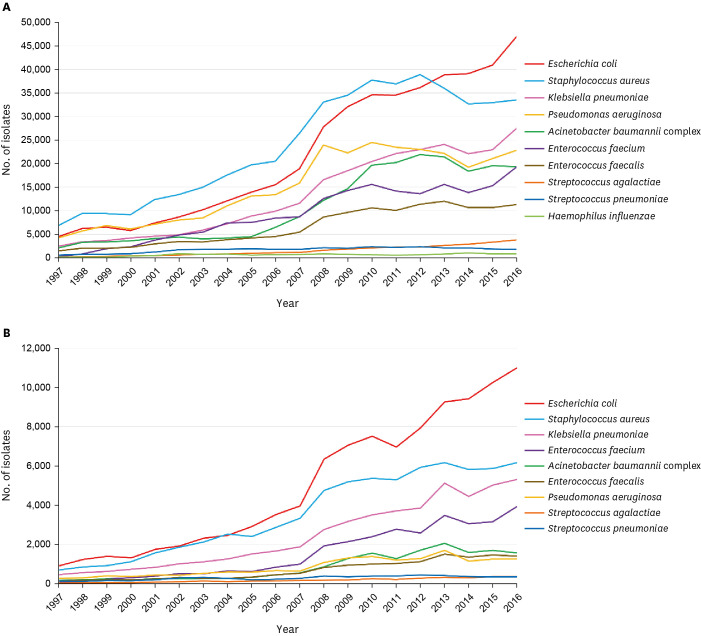
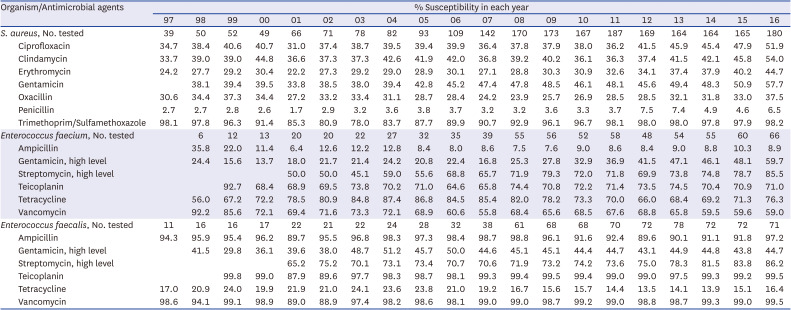
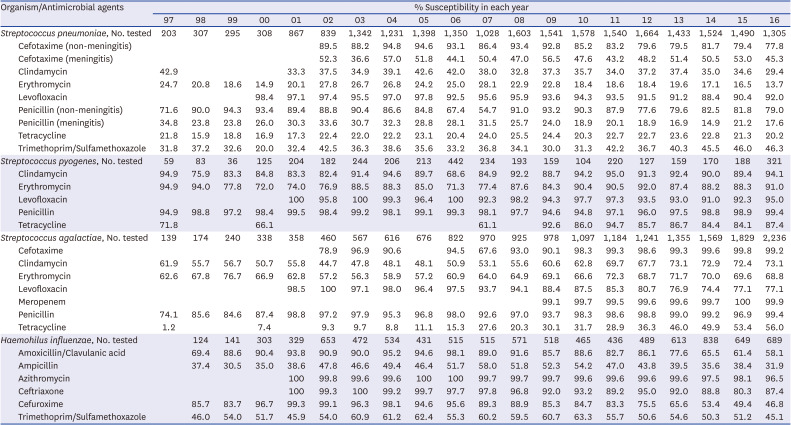
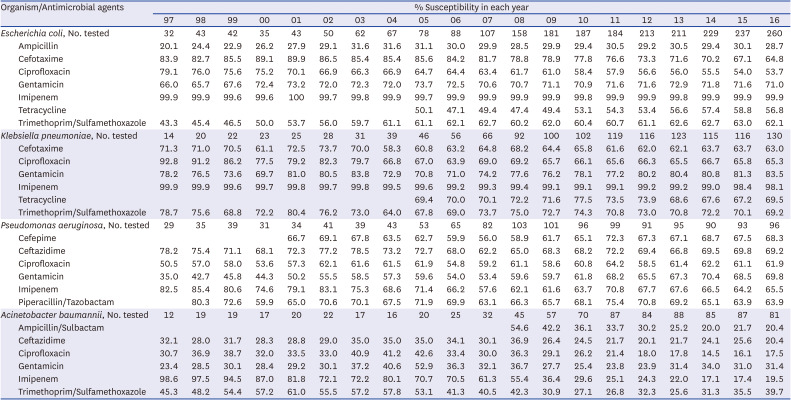
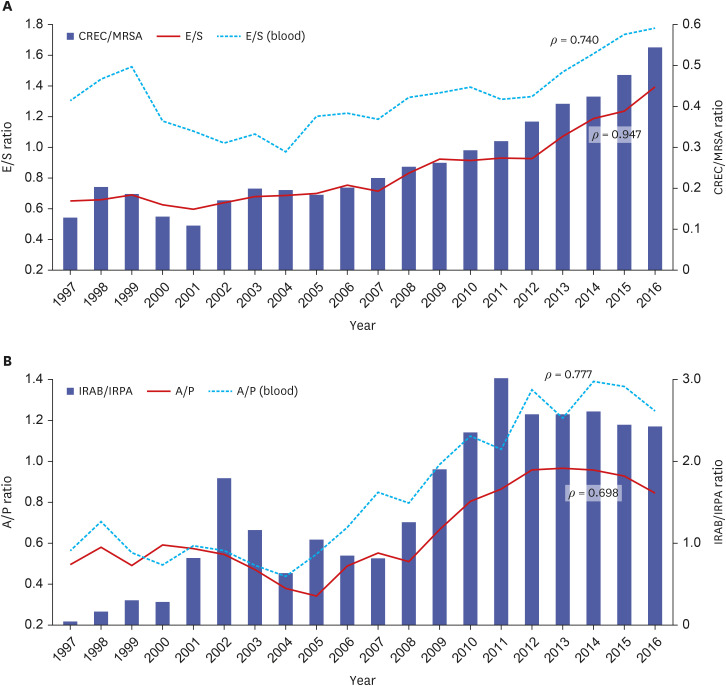




 PDF
PDF Citation
Citation Print
Print



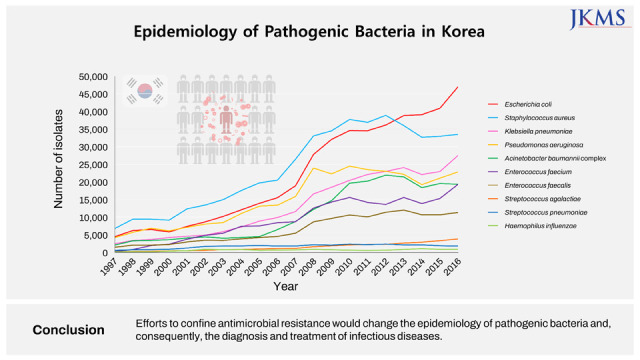
 XML Download
XML Download